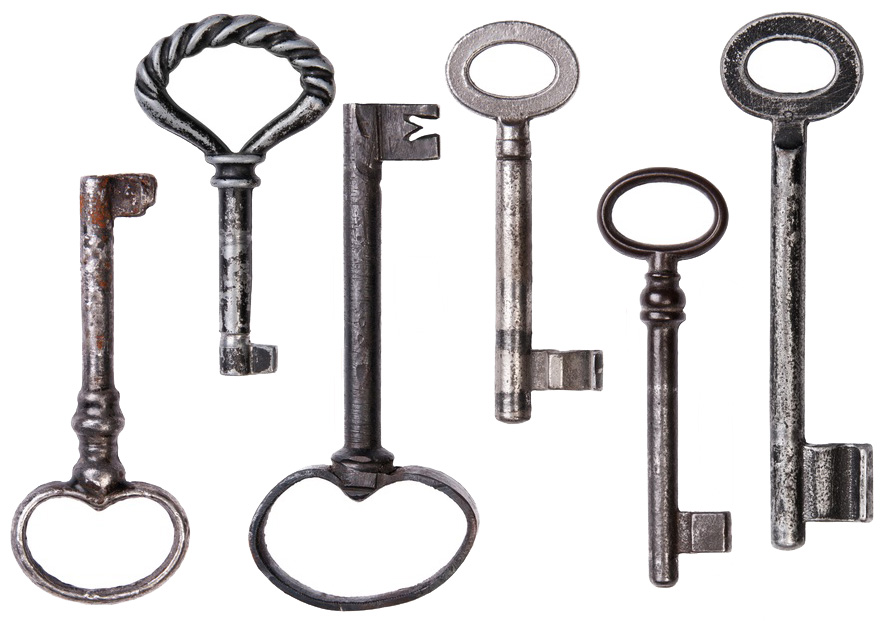Dealer Authority
Don't Slap Your Dealership Logo on Crap Content

We're all professionals here at Driving Sales. There's nothing wrong with some passionate criticism about practices that dealers and even vendors are doing that may do more damage than good for a dealership's reputation.
A growing trend that I've been seeing that has apparently been in play for quite some time now (shame on me for not noticing earlier) is the idea of taking a funny picture or an image of a clever saying, slapping the dealer's logo on it, and posting it to Facebook. I cannot express fully in writing or even in the video below how bad of an idea this is, but I'll try.
I'm open to discuss this with anyone who claims that this is the right thing to do for the dealership's marketing, branding, and reputation.
Dealer Authority
Why Google+ Business Pages Cannot Be Dismissed
 When Google+ Local replaced Google Places earlier this month, my first thought was, "Finally dealers will start paying more attention to their Google+ pages!"
When Google+ Local replaced Google Places earlier this month, my first thought was, "Finally dealers will start paying more attention to their Google+ pages!"
Some did. Most did not. Sure, many continued to watch their reviews in the new venue, but the 100+ pages that I've been monitoring showed little change in the amount of effort being put into them.
The biggest challenge I face in understanding this is that it's not a ton of effort. Even if dealers post the same things to their Google+ pages that they're posting to their Facebook pages, that completely works for me. It's not ideal, but it's better than inactivity.
Fast forward a few weeks and the video I made back in the beginning of June is still completely relevant. Google+ is still, to many, a ghost town. It requires effort to build up similar to the effort most of us have put into building our Facebook pages and most are hoping that they won't have to go through that again. Unfortunately, we all will. Google+ is going to get shoved down our throats whether we like it or not. It's going to get shoved down everyone's throats. Over time, it will gain prominence and relevance and one day we're all going to look up and realize that it was a mistake to avoid the extra effort it takes to keep our Google+ pages looking strong and engaging.
Here's the video I mentioned. Please let me know what you think.
No Comments
Dealer Authority
Why Google+ Business Pages Cannot Be Dismissed
 When Google+ Local replaced Google Places earlier this month, my first thought was, "Finally dealers will start paying more attention to their Google+ pages!"
When Google+ Local replaced Google Places earlier this month, my first thought was, "Finally dealers will start paying more attention to their Google+ pages!"
Some did. Most did not. Sure, many continued to watch their reviews in the new venue, but the 100+ pages that I've been monitoring showed little change in the amount of effort being put into them.
The biggest challenge I face in understanding this is that it's not a ton of effort. Even if dealers post the same things to their Google+ pages that they're posting to their Facebook pages, that completely works for me. It's not ideal, but it's better than inactivity.
Fast forward a few weeks and the video I made back in the beginning of June is still completely relevant. Google+ is still, to many, a ghost town. It requires effort to build up similar to the effort most of us have put into building our Facebook pages and most are hoping that they won't have to go through that again. Unfortunately, we all will. Google+ is going to get shoved down our throats whether we like it or not. It's going to get shoved down everyone's throats. Over time, it will gain prominence and relevance and one day we're all going to look up and realize that it was a mistake to avoid the extra effort it takes to keep our Google+ pages looking strong and engaging.
Here's the video I mentioned. Please let me know what you think.
No Comments
Dealer Authority
Another Link-Buying Program Gets Busted
 Dun and Bradstreet. It's a name that has been synonymous with credibility for two centuries. Now, a separate organization licensed to use their name is under fire for allegedly acquiring inbound links and their SEO agency has been completely banned in Google.
Dun and Bradstreet. It's a name that has been synonymous with credibility for two centuries. Now, a separate organization licensed to use their name is under fire for allegedly acquiring inbound links and their SEO agency has been completely banned in Google.
Dun & Bradstreet Credibility Corp had links purchased for them by iAcquire. They were reported two days ago and Google deindexed the search company behind it. We will see what sort of penalty is imposed on D&B.
The automotive industry is one that is relatively-free of companies that use such techniques, but this should act as a reminder that trying to do things the wrong way can lead to disaster. Google's Penguin Update is a good thing for legitimate SEO firms. It makes quality out-perform quantity and highlights that manual, appropriate content marketing trumps spammy link-building any day.
No Comments
Dealer Authority
Another Link-Buying Program Gets Busted
 Dun and Bradstreet. It's a name that has been synonymous with credibility for two centuries. Now, a separate organization licensed to use their name is under fire for allegedly acquiring inbound links and their SEO agency has been completely banned in Google.
Dun and Bradstreet. It's a name that has been synonymous with credibility for two centuries. Now, a separate organization licensed to use their name is under fire for allegedly acquiring inbound links and their SEO agency has been completely banned in Google.
Dun & Bradstreet Credibility Corp had links purchased for them by iAcquire. They were reported two days ago and Google deindexed the search company behind it. We will see what sort of penalty is imposed on D&B.
The automotive industry is one that is relatively-free of companies that use such techniques, but this should act as a reminder that trying to do things the wrong way can lead to disaster. Google's Penguin Update is a good thing for legitimate SEO firms. It makes quality out-perform quantity and highlights that manual, appropriate content marketing trumps spammy link-building any day.
No Comments
Dealer Authority
Social Media So Far in 2012
The social media world is in a state of flux with the Facebook IPO causing waves. That's the big news from this month, but it's been a rocky road throughout.
Social media has become one of the ways that business gets done. Car dealers are spending more time on it. Their customers are spending more time on it. Cracking that nut is tough, but it can definitely be done. Before getting into a long social media marketing discussion, let's take a look at the state of social media to date.
Click to enlarge.
No Comments
Dealer Authority
Social Media So Far in 2012
The social media world is in a state of flux with the Facebook IPO causing waves. That's the big news from this month, but it's been a rocky road throughout.
Social media has become one of the ways that business gets done. Car dealers are spending more time on it. Their customers are spending more time on it. Cracking that nut is tough, but it can definitely be done. Before getting into a long social media marketing discussion, let's take a look at the state of social media to date.
Click to enlarge.
No Comments
Dealer Authority
The Three Keys to Automotive SEO Under Penguin
As car dealers develop their SEO strategies with their vendors, they should be well-aware of how the companies they work with are handling Google Penguin. The update from April, 2012, has quite a few SEOs in other industries scrambling to regain their search rankings. It hasn't been as devastating in the automotive industry but we have seen some companies whose dealers have dropped.
Penguin is the "webspam" algorithm change that is going after aggressive link-building techniques. For years Google has utilized inbound links as a measurement to help determine search rankings. This is the best way for them to do this because it acts as a relevancy "voting" system of sorts; the more links you have from quality sites pointing to yours, the more authoritative it is in Google's eyes.
The challenge has been with strong SEO firms who are aware of this and exploit it by building links to their sites. There's nothing wrong with building links if it's a result of value, but Google wants to put an end to aggressive styles that are based upon trading, network building, or purchased links.
Here are the three primary attributes that a proper link-building plan should have to be successful with automotive SEO:
Quality
There was a time when links could be built in bulk to fool the search engines. There were companies that specialized in building tens, even hundreds of thousands of pages with the singular purpose of building "link juice" to their sites. Google has been combating this for years but the Penguin update has seen the biggest affect on this strategy.
It's better to get a single link from a high-value site that is trusted by the search engines and respected by readers than to get 10,000 links from spam sites. In fact, those spam link can do damage to a site (technically speaking, of course, as Google has said there's really no such thing as negative SEO except in extreme circumstances).
If you have content on your website and you think it will be of value on other sites, make sure that you're going after only trusted sites. Send them your content and if they like it they'll link to it. Avoid link-building programs that rely on forums, comments, or other low-quality venues.
Organic
There was a famous case of "Googlebombing" that happened when George W. Bush was in office when thousands of links were pointed to his website with the anchor text "Miserable Failure". It worked, and his site ranked #1 for a while. Recognizing what was happening, Google made adjustments in 2007 and ever since they've been on the lookout for keyword manipulation through this technique.
Google is smart. They can recognize when a website is getting natural links based upon quality and when it's getting tons of links built to it for the sake of nailing down a keyword. Diversity of anchor text is one of the biggest factors; they know that the chances that the majority of sites linking to a particular page would have the exact same anchor text are nil. Other than a website's name, there's no other words that could accomplish this. Real people link to Bob Howard Toyota, not Oklahoma City Toyota Tundra Service, for example.
Being organic means getting links that use the "money term" anchor text as well as links that are naturally anchored. To be "money term heavy" spells doom.
Relevant
This is the tricky one. Is it better to get a link from a PageRank2 automotive website or a PageRank6 non-automotive website?
The real answer is "yes" (in other words, get both) but it's important to understand the "why" this is important.
Google realizes that sites can become authorities for their industry or niche. As a result, they will get links from outside of the industry... at least they should. This is what makes it tricky when discussing in a blog post.
There's nothing wrong with links that come from outside of the industry but the focus should be on industry links. If you have a graphic on your website that can be embedded on an automotive website or a non-automotive website, there's nothing wrong with sending it to both types. Keep relevant but be open minded to becoming an authority from outside the industry.
* * *
Google Penguin is just the beginning. The changes they are implementing with Google+ amongst other changes will continue to improve the search ranking pages and clean up the algorithm. This is a time to rejoice, not get worried. If your automotive SEO partner is legitimate and aware of the changes, you have nothing to worry about. If not, call us. We're ready to help.
* * *
This post originally appeared on TopDealerSEO. Find +JD Rucker on Twitter, Facebook, and Pinterest.
No Comments
Dealer Authority
The Three Keys to Automotive SEO Under Penguin
As car dealers develop their SEO strategies with their vendors, they should be well-aware of how the companies they work with are handling Google Penguin. The update from April, 2012, has quite a few SEOs in other industries scrambling to regain their search rankings. It hasn't been as devastating in the automotive industry but we have seen some companies whose dealers have dropped.
Penguin is the "webspam" algorithm change that is going after aggressive link-building techniques. For years Google has utilized inbound links as a measurement to help determine search rankings. This is the best way for them to do this because it acts as a relevancy "voting" system of sorts; the more links you have from quality sites pointing to yours, the more authoritative it is in Google's eyes.
The challenge has been with strong SEO firms who are aware of this and exploit it by building links to their sites. There's nothing wrong with building links if it's a result of value, but Google wants to put an end to aggressive styles that are based upon trading, network building, or purchased links.
Here are the three primary attributes that a proper link-building plan should have to be successful with automotive SEO:
Quality
There was a time when links could be built in bulk to fool the search engines. There were companies that specialized in building tens, even hundreds of thousands of pages with the singular purpose of building "link juice" to their sites. Google has been combating this for years but the Penguin update has seen the biggest affect on this strategy.
It's better to get a single link from a high-value site that is trusted by the search engines and respected by readers than to get 10,000 links from spam sites. In fact, those spam link can do damage to a site (technically speaking, of course, as Google has said there's really no such thing as negative SEO except in extreme circumstances).
If you have content on your website and you think it will be of value on other sites, make sure that you're going after only trusted sites. Send them your content and if they like it they'll link to it. Avoid link-building programs that rely on forums, comments, or other low-quality venues.
Organic
There was a famous case of "Googlebombing" that happened when George W. Bush was in office when thousands of links were pointed to his website with the anchor text "Miserable Failure". It worked, and his site ranked #1 for a while. Recognizing what was happening, Google made adjustments in 2007 and ever since they've been on the lookout for keyword manipulation through this technique.
Google is smart. They can recognize when a website is getting natural links based upon quality and when it's getting tons of links built to it for the sake of nailing down a keyword. Diversity of anchor text is one of the biggest factors; they know that the chances that the majority of sites linking to a particular page would have the exact same anchor text are nil. Other than a website's name, there's no other words that could accomplish this. Real people link to Bob Howard Toyota, not Oklahoma City Toyota Tundra Service, for example.
Being organic means getting links that use the "money term" anchor text as well as links that are naturally anchored. To be "money term heavy" spells doom.
Relevant
This is the tricky one. Is it better to get a link from a PageRank2 automotive website or a PageRank6 non-automotive website?
The real answer is "yes" (in other words, get both) but it's important to understand the "why" this is important.
Google realizes that sites can become authorities for their industry or niche. As a result, they will get links from outside of the industry... at least they should. This is what makes it tricky when discussing in a blog post.
There's nothing wrong with links that come from outside of the industry but the focus should be on industry links. If you have a graphic on your website that can be embedded on an automotive website or a non-automotive website, there's nothing wrong with sending it to both types. Keep relevant but be open minded to becoming an authority from outside the industry.
* * *
Google Penguin is just the beginning. The changes they are implementing with Google+ amongst other changes will continue to improve the search ranking pages and clean up the algorithm. This is a time to rejoice, not get worried. If your automotive SEO partner is legitimate and aware of the changes, you have nothing to worry about. If not, call us. We're ready to help.
* * *
This post originally appeared on TopDealerSEO. Find +JD Rucker on Twitter, Facebook, and Pinterest.
No Comments
Dealer Authority
The 6 keys to brand messaging through social media

Nearly every business in the world has considered using social media for their brand (or at least been told by someone to do so). It's an important concept because social media has all of the characteristics of an excellent set of venues for getting out a brand message - popularity, ease, reach, and interactivity. The challenge is that with so many businesses doing it, many messages start with great intentions and end up falling on deaf (aka nonexistent) ears.
There are ways to use social media properly to get out the message whether it's a general PR item or a major announcement. While press releases are still a strong method of doing it, there are certain restrictions that make social media and blogs in particular a superior message delivery system. Those reasons are easy to list:
- * Press releases are good for an initial burst, but once published can fade quickly, get de-indexed, or get deleted altogether
- * Social media can take a message and spread it out over time
- * Blogs can diversify the message and "chop it up" into individual components (as we'll demonstrate below)
- * Creativity plays much better through blogs and social media channels; some press releases will be filtered if they get too creative
- * Most businesses are doing press releases right while doing social media wrong, giving those doing social media the right way an upper hand on the competition
Now that the "why" is out of the way, here's the "how"...
Choose the right topic

Something's happening at the company. It could be a new product or service. It could be a partnership or change in leadership. It could be a charitable contribution or simply taking a stand against an injustice. Regardless of what "it" is, there needs to be a campaign built around it.
The most common mistake that companies make when trying to send out a brand message is that they simply pick the wrong topic. It may seem impossible; how can the topic be anything other than obvious? The reality is that time and time again businesses focus on the wrong portion of the news because they go after what is most important to them rather than selecting something that will resonate properly through social media.
Here's an example to illustrate the importance of topic selection.
Pick the right channels

To really get a brand message out, one must select the right channels. A blog post is only the beginning. There are other venues through which to get the word out to the masses. The obvious ones are Facebook, Twitter, and Google+, but those only help to amplify the message once it's created. Social content sites like YouTube and Pinterest can enhance the message, giving it more bulk and enabling more opportunities to cross-pollinate the message.
It can be broken down into five channel types:
- Social Networks
- Blogs
- Visual Content
- Social News
- Emerging Sites
Here's a breakdown of the different channels and how they work.
Use a blog as the hub

The hub and spoke model has been used in marketing for decades, well before the internet was even conceived. Modern variations include uses for search engine optimization and content marketing. These are not what we mean by using a blog as the hub.
In brand messaging, the goal is to get the masses back to a single point of consolidated information. This post in itself is a loose example; we're posting this article on TECHi with each point expanded through other blog posts. TECHi is the hub for this particular topic while the other posts, including the one on Business Insider about Why Blogs Should Be The Hub Of Social Media Strategies, each go into further detail on their particular component of the overall story.
The goal is to have multiple avenues through which to promote and draw people back to the original. Even if they don't visit the hub, they'll still get some form of important information that may have them explore further through search. They may read the spoke story and never come back. It doesn't matter. Having a single blog as the hub is a key to this strategy as well as others. Blogs make the only length restriction the attention span of the reader. No other limits are present.
Slice it up

Now that we know about the hub, it's time to plan it out for the slicing. In the example above that refers to the Sally's Shoe Company story, the hub story would be about everything without going into much detail about any of the components. Visitors to the hub story could explore the other topics more deeply. Here are some examples of spoke topics from the example above:
- * The Shinking Habitats of Endangered Animals in South America
- * How Sally's Shoes Protects the Brazilian Tree Frog
- * Sally's Shoes and Bueno Shoes: A Match Made in the Amazon
- * Animals, Partnerships, and Clevergirl Crosstrainers
There are other possibilities depending on the real situation, but these would each be linked from the longer hub story to go into more detail about the different components of the overall message. It becomes a two-way street of traffic and exposure and allows for more opportunities for people to latch onto and share on their own social networks.
From here, you could learn more about The Art of Multi-Posting.
"A hippo walks into a bar"

The real difference between social media and press releases is in the creative license. This doesn't have to be bland and boring. It can't be if it has any hopes of being shared socially.
Nearly every situation can have some color added to it. The "hippo in the bar" is an allusion to something funny, entertaining, or extremely interesting about the message. For Sally's Shoes, it could be something that's literally about a hippo that goes into a bar, leading up to a comedic result while still focusing on the idea that these endangered animals need a refuge of their own so they don't risk human contact that could turn deadly.
Spread out the layers

Now that the pieces are ready to be written, it's time to plan out the exposure. You can't simply post the stories and start Tweeting and Facebooking everything at once. Depending on the timing of the news, social media exposure can be spread out over time to allow for the maximum possible exposure of the overall news.
People latch onto different things when sharing on social media. Something that rings well for one person will be ignored by another. The goal is to get as much exposure for each individual component as possible, even covering one on top of another in a way that will lead people down a path to eventually land on the hub.
Bring it home

This process isn't nearly as easy as putting together a press release and pressing it through the proper channels. It's not designed to be easy, and that's a good thing. Your efforts will be greater than your competitors'. You results will be greater as well. Put in the effort. Take a swing.
Bring it home.
(Post originally published on TECHi)
+JD Rucker is Editor at Soshable, a Social Media Marketing Blog. Find him on Twitter, Facebook, and Pinterest.
No Comments


No Comments